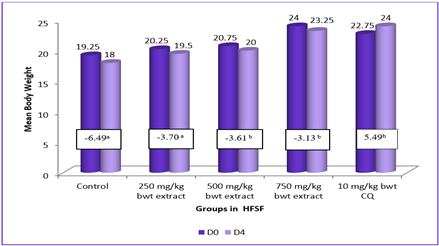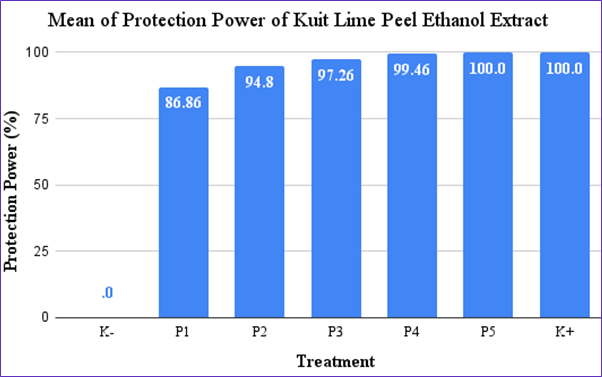Identification of ectoparasites and endoparasites on fruit bats (Cynopterus brachyotis) in Ketapang Timur Village, Ketapang Sub-District, Sampang District
Downloads
This study aims to determine the ectoparasites and endoparasites that infest fruit bats (Cynopterus brachyotis) in Ketapang Timur, Ketapang District, Sampang Regency. The samples in this study were blood, feces and ectoparasites from 50 fruit bats taken in Ketapang District, Sampang Regency. Blood samples were examined using a blood smear method with Giemsa staining, while stool samples were examined using three methods, namely native, sucrose floating, and acid-fast modification. Blood examination was checked using a microscope with 1000x magnification and stool examination at 400x magnification. The sample is considered positive if under microscope observation found parasites that match the characteristics of the protozoa sourced from scientific references. The results of the study of 50 fruit bats examined found five positives for digestive protozoa and ectoparasites, the infection was single, with details of one tail being infected with Eimeria sp. and one tail was infected by Leptocyclopodia ferrarii, while blood protozoa were not found. This study concludes that the type of protozoa found in the digestive tract is Eimeria sp. (14%) and ectoparasite Leptocyclopodia ferrarii. (2%). The total percentage obtained was 16% positive for a single infection of protozoa and ectoparasites from 50 fruit bats. Suggestions that can be put forward are to conduct further research using PCR and sequencing to obtain more specific and accurate identification results, for subspecies or strains.
Adhikari, R. B., Maharjan, M., and Ghimire, T. R. 2020. Prevalence of Gastrointestinal Parasites in the Frugivorous and the Insectivorous Batsin South central Nepal. Journal of Parasitology Research, 2020.
Bertola, P., Aires, Favorito, Graciolli, Amaku, and Pinto-da-Rocha. 2005. Bat Flies (Diptera: Streblidae, Nycteribiidae) Parasitic on Bats (Mammalia: Chiroptera) at Parque Estadual da Cantareira, SaËœo Paulo, Brazil: parasitism rates and host-parasite associations. Mem Inst Oswaldo Cruz 100(1), 25–32. doi:doi:10.1590/S0074-02762005000100005.
Betke, M., Hirsh, D. E., Makris, N. C., McCracken, G. F., Procopio, M., Hristov, N. I., and Kunz, T. H. (2008). Thermal imaging reveals significantly smaller Brazilian free-tailed bat colonies than previously estimated. Journal of Mammalogy, 89(1):18-24.
Calisher, C., Childs, Field, Holmes, and Schountz, T. 2006. Bats: Important Reservoir Hosts of Emerging Viruses. Clin Microbiol Rev. 19(3):531-545.
Damayanti, N. dan Sendow, I. 2015. Ebola: Penyakit Eksotik Zoonosis yang Perlu Diwaspadai. 25(1):29-38.
Daszak, P., Cunningham,and Hyatt. 2000. Emerging Infectious Diseases of Wildlife–Threats to Biodiversity and Human Health. Science 287:443–449.
Gay, N., Olival, K. J., Bumrungsri,S., Siriaroonrat,B., Bourgarel, M., and Morand,S. 2014. Parasite and viral species richness of Southeast Asian bats: fragmentation of areadistribution matters. International Journal for Parasitology: Parasites and Wildlife, 3(2):161-170.
Hanafiah, M., H. D. Alfiansyah, dan A. Sayuti. 2018. Identifikasi Parasit pada Biawak Air (Varanus salvator). Jurnal Sains Veteriner. 36(1):24-31.
Hoare, C. A. 1965. Vampire bats as vectors and hosts of equine and bovine trypanosomes. Actatropica,22(3):204-16.
Hofstede, H.M., and Fenton, M.B. (2005). Relationships between roost preferences, ectoparasite density, and grooming behaviour of neotropical bats. Journal of Zoology,266(4):333-340.
Iqbal, H.P. 2014. Hubungan Inang-Ektoparasit Pada Kelelawar Pemakan Buah Di Kampus Universitas Indonesia, Depok.
Klimpel, S., and Mehlhorn, H. 2016. Bats (Chiroptera) as vectors of diseases and parasites. Springer-Verlag Berlin An. 25-131
Kruse, H., Kirkemo, and Handeland. 2004. Wildlife as Source of Zoonotic Infections. Emerging Infectious Diseases. 10(2):2067-2072.
Lim, Z. X., Hitch, A. T., Lee, B. P. H., Low, D. H., Neves, E. S., Borthwick, S. A., and Mendenhall, I. H. 2020. Ecology of bat flies in Singapore: A study on the diversity, infestation bias and host specificity (Diptera: Nycteribiidae). International Journal for Parasitology: Parasites and Wildlife, 12:29-33.
Luis, A. D., Hayman, D. T., O'Shea, T. J., Cryan, P. M., Gilbert, A. T., Pulliam, J. R., and Webb, C. T. 2015. A comparison of bats and rodents as reservoirs of zoonotic viruses: are bats special?. Proceedings of the Royal Society B: Biological Sciences, 280(1756).
Maa,T.C. 1975. On new Diptera Pupipara from the oriental region. Pacific Insects, 16: 465-486.
Miller, C. 2014. Host specificity and ectoparasite load of batflies in Utila, Honduras.
Nangoy, M., Ransaleleh, T., Lengkong, H., Koneri, R., Latinne, A., and Kyes, R.C. 2021. Diversity of fruit bats (Pteropodidae) and their ectoparasites in Batuputih Nature Tourism Park, Sulawesi, Indonesia. Biodiversitas Journal of Biological Diversity, 22(6).
Nowak, R.M., and Walker, E.P. 1994. Walker's bats of the world. JHU Press.
Olival, K. J., Dick, C. W., Simmons, N. B., Morales, J. C., Melnick, D. J., Dittmar, K., and DeSalle,R. 2013. Lack of population genetic structure and host specificity in the batfly, Cyclopodia horsfieldi, across species of Pteropus bats in Southeast Asia. Parasites &Vectors,6(1):1-18.
Pierson, E., and Rainey. 1992. The Biology of Flying Foxes of the Genus Pteropus: a review. In: Pacific Island Flying Foxes: Proceedings of an International Conservation Conference (eds. D.E. Wilson and G.L. Graham). 1-17.
Piksa, K., Skwarek, M., and Siuda, K. 2011. Argasid and spinturnicid mite load on swarming bats in the Tatra mountains, Poland. Folia parasitologica, 58(4),322.
Suyanto, A. 2001. Kelelawar di Indonesia. Cetakan Pertama.Puslitbang Biologi – LIPI. Bogor.
Tan, K., Zubaid, and Kunz. 1998. Food Habits of Cynopterus brachyotis (Muller) (Chirop-tera: Pteropodidae) in Peninsular Malaysia. Journal of Tropical Ecology. 14: 299–307.
Taylor, M., Coop,, and Wall. 2016. Veterinary Parasitology. 4th Edition. Blackwell Publishing. UK. 853-886.
Wilson, S. C., and Carpenter, J. W. 1996. Endoparasitic diseases of reptiles. In Seminars in Avian and Exotic Pet Medicine Vol. 2, No. 5:64-74.
Copyright (c) 2021 Journal of Parasite Science

This work is licensed under a Creative Commons Attribution-NonCommercial-ShareAlike 4.0 International License.
- Every manuscript submitted to must observe the policy and terms set by the Journal of Parasite Science
- Publication rights to manuscript content published by the Journal of Parasite Science is owned by the Journal of Parasite Science with the consent and approval of the author(s) concerned
- Authors and other parties are bound to the Creative Commons Attribution-NonCommercial-ShareAlike 4.0 International License for the published articles, legal formal aspect of journal publication accessibility refers to Creative Commons Attribution-NonCommercial-ShareAlike 4.0 International License (CC BY-NC-SA)
- By submitting the manuscript, the author agrees to the requirement that the copyright of the submitted article will be transferred to Journal of Parasite Science as the publisher of the journal. The intended copyright includes the right to publish articles in various forms (including reprints). journal of parasite science retains the publishing rights to published articles.

































